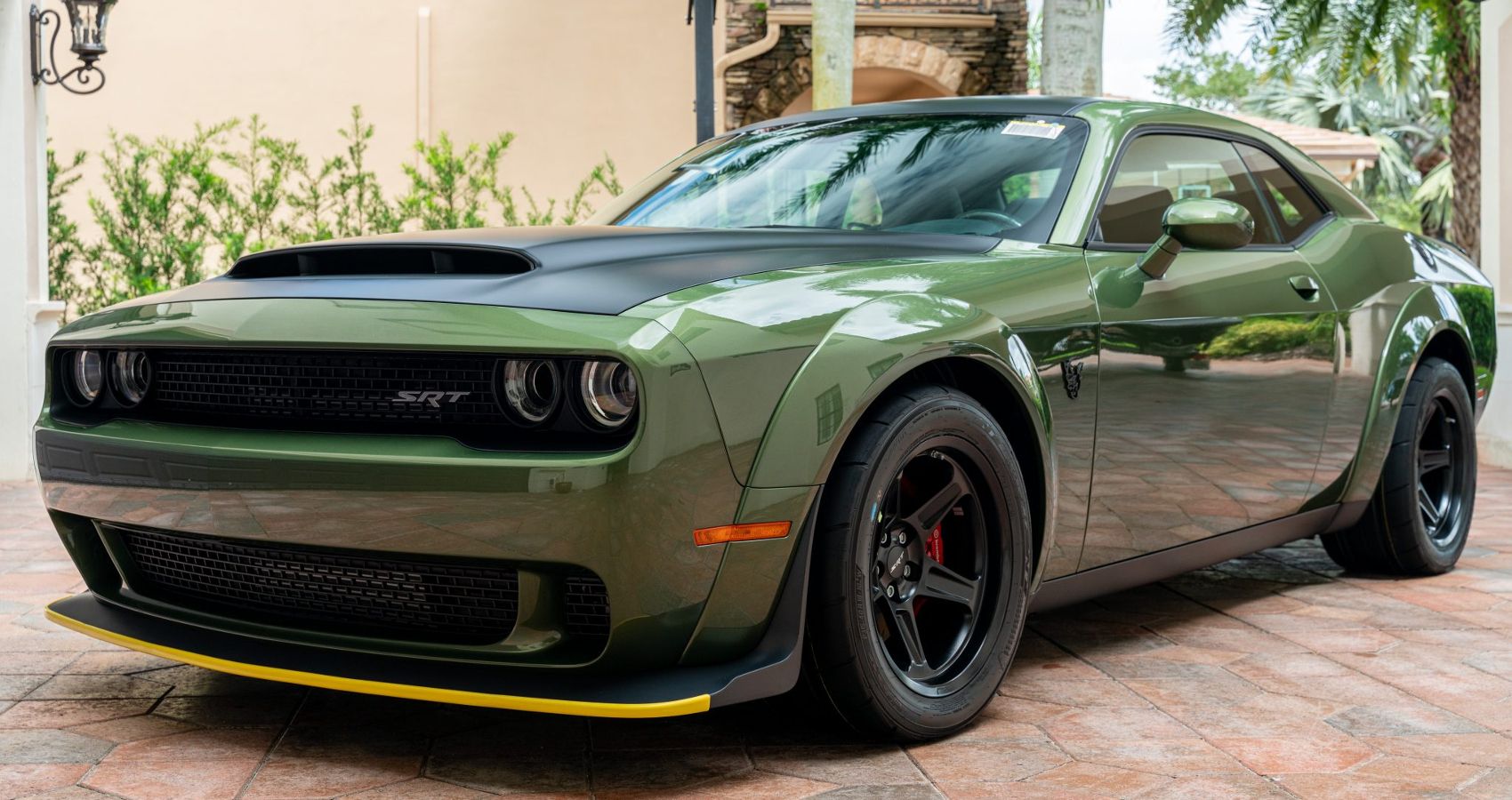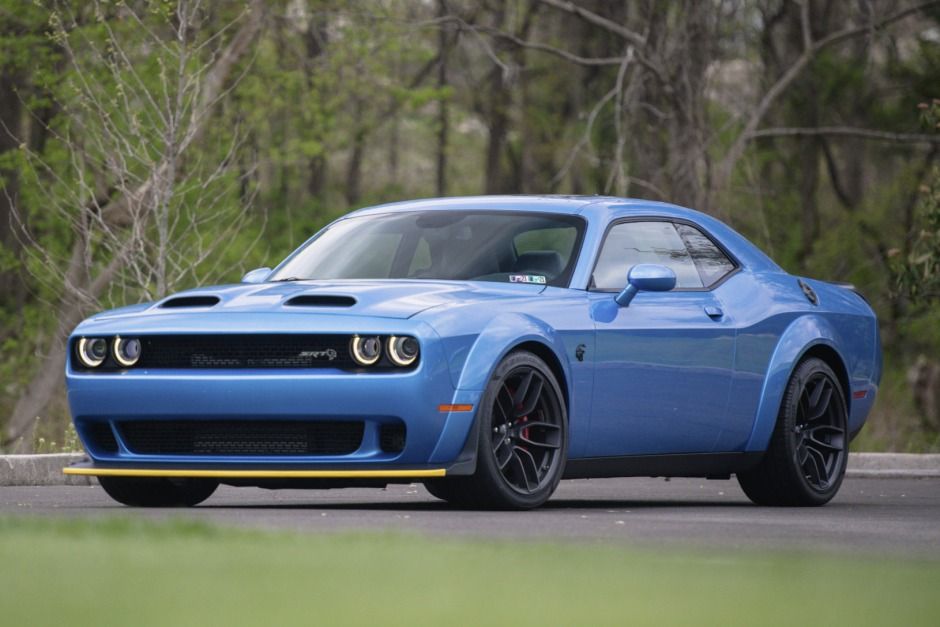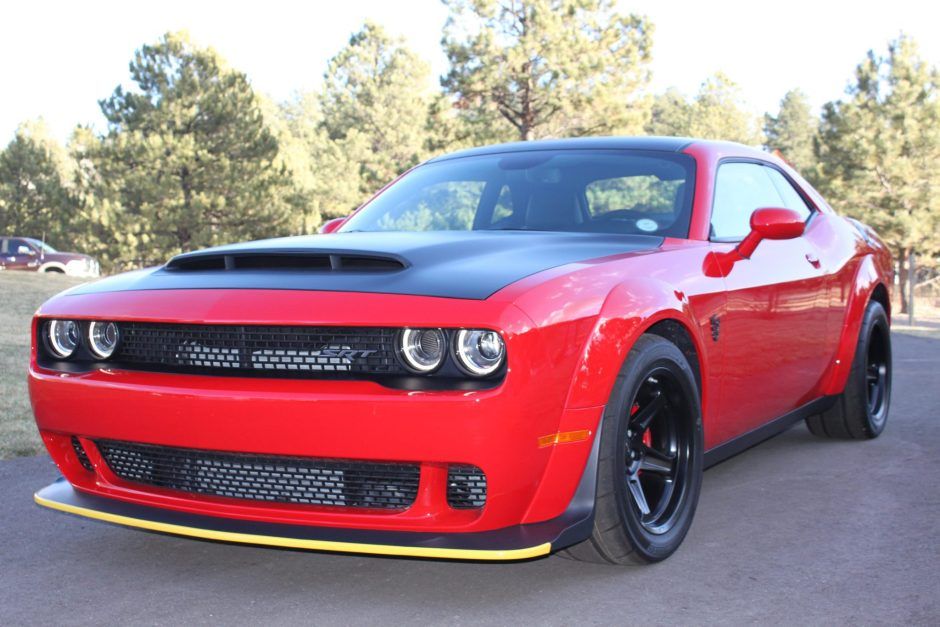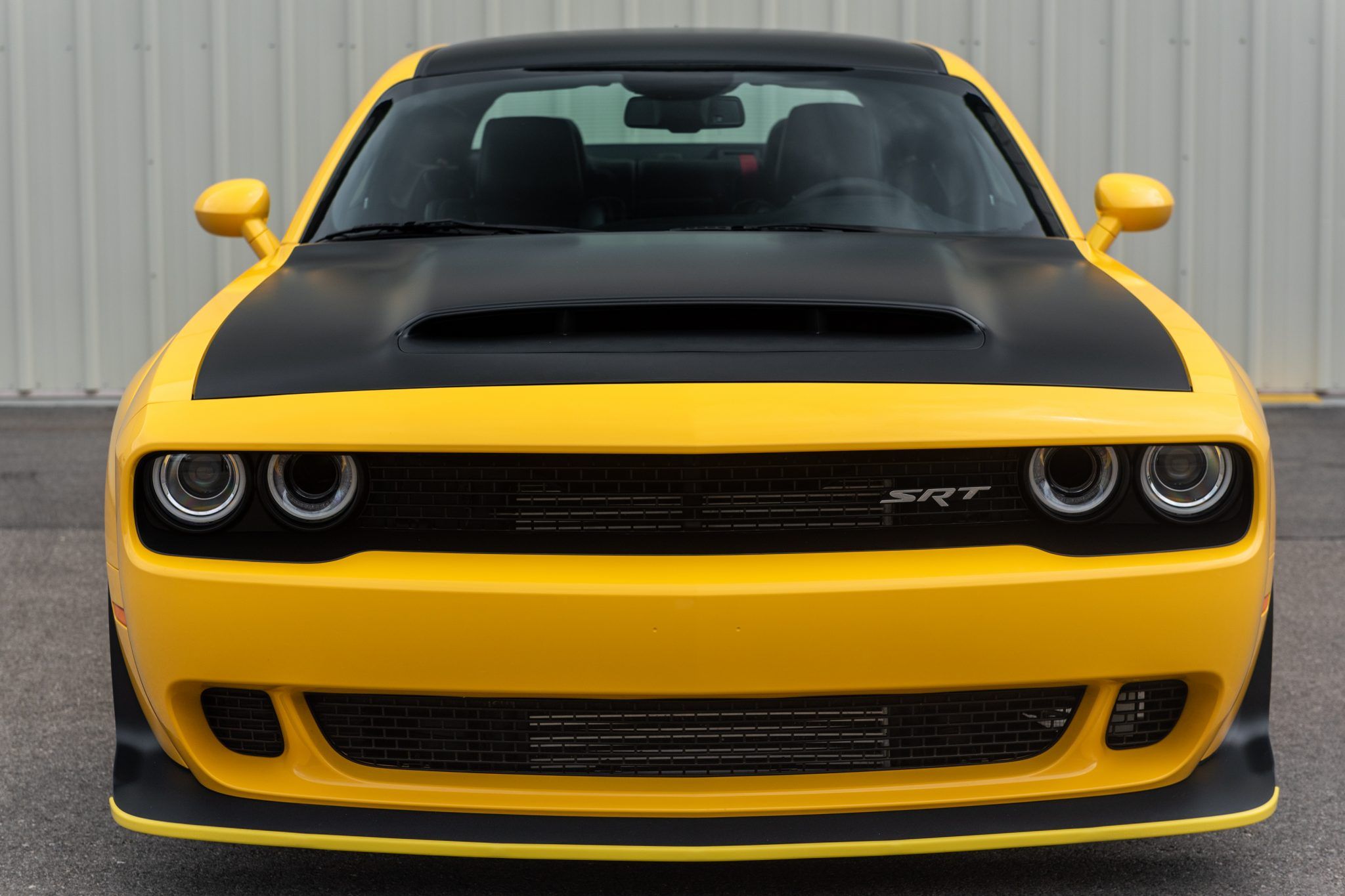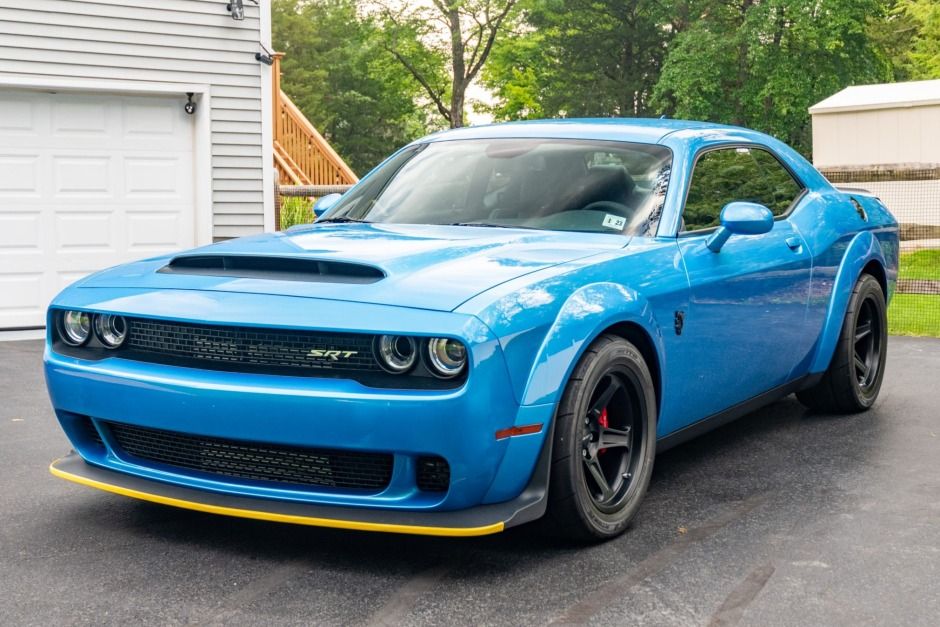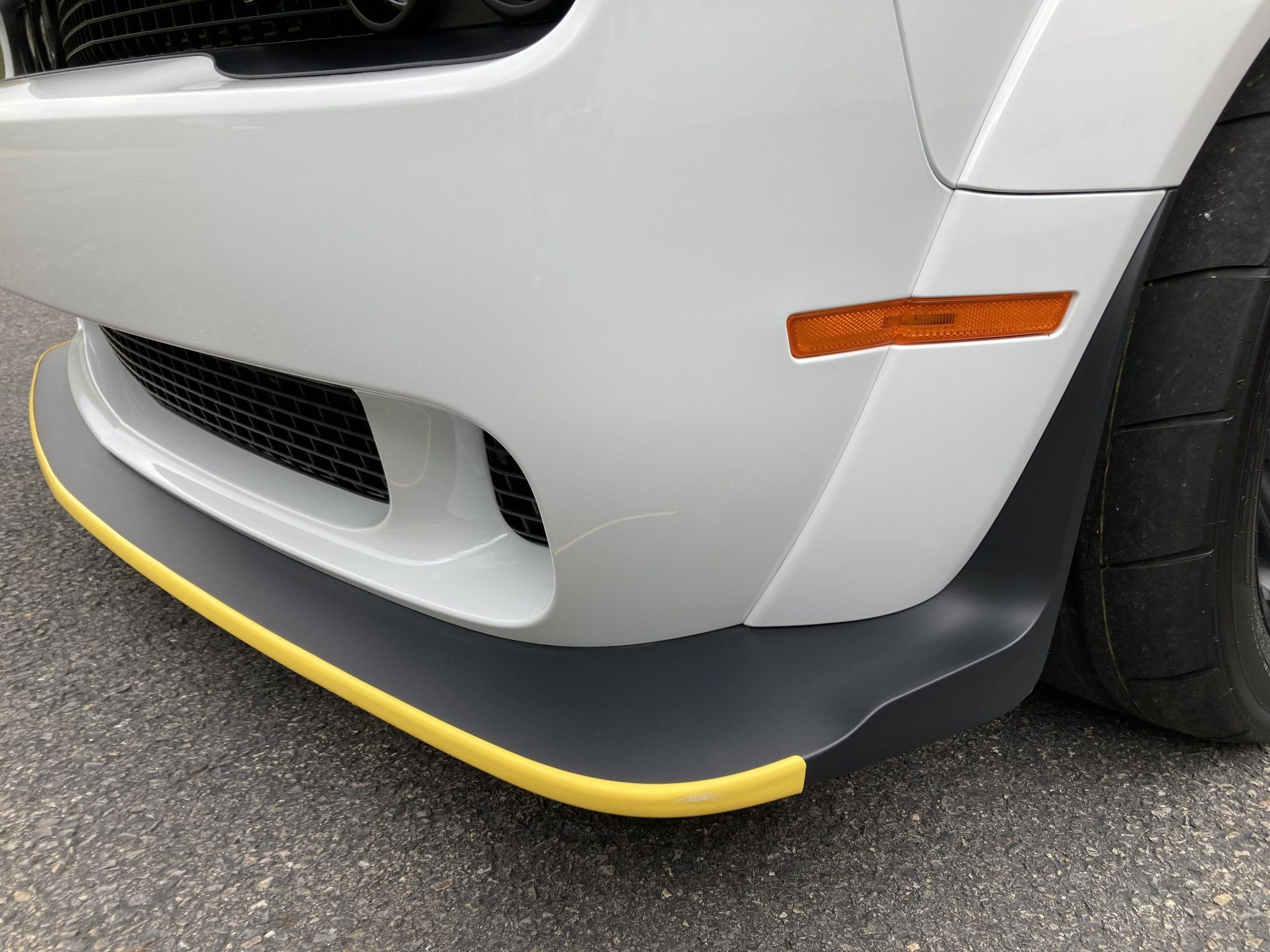The car community will, with all likelihood, never be able to shed the inevitable competition between brand-loyal groups or the constant jokes about others' modification choices.
In fairness, there are some decisions car enthusiasts make that leave the rest of us scratching our heads. If you're new to the car scene, though, it could save you a lot of heartache to know the things that start car-related controversy before doing it yourself.
And rather than naming all of them in one go, today, we are focusing on a Dodge-related situation that has divided the Challenger-Charger community specifically.
Splitter Guards. A polarizing topic that has no definitive right or wrong answer, but is worth bringing to attention nonetheless. Here is what you need to know about them and why.
The Dodge Splitter Guard: What It Is
In 2015, Dodge debuted one of the most talked-about, powerful and mean-looking cars of the 2010s: the Dodge Challenger SRT Hellcat. A 6.2-liter, 707 hp and 650 lb-ft monster that could destroy more tires than a drift track. Every magazine, journalist, and YouTuber had their eyes on the Hellcat, which not only helped its overall sales but bolstered an entirely new SRT movement.
Dodge decided that their line of SRT products should have protective measures installed from the factory that would prevent damage to the front fascia of new units. They designed a simple and easily noticeable plastic guard that attached to the edge of the front splitter on cars equipped with them to deter damage from rocks, steep driveways, and people's clumsy feet during transport to the dealerships.
Manufacturers do these kinds of transport safety measures all the time and for several reasons. Other than protecting vulnerable bodywork from damage, it can also be an economic decision for companies.
Transporting tens of thousands of Dodges without splitter guards runs the risk of damaging several cars and having to replace parts, costing a lot of money. But producing a few cents worth of plastic guards for each unit will lower the risk substantially and end up costing less than having to transport the damaged vehicles back to the factory, replacing the part and sending it back to the dealer once again.
The Controversy Over Dodge Splitter Guards
As you can see, all Dodge splitter guards come with brightly-colored plastic and are not made to be a cosmetic option. Dodge intended for dealers to remove the splitters once a car sold on the showroom floor.
But, as you may already have noticed, many keep the neon guards on intentionally. Of course, there are likely dealers that forget to take them off for customers who wouldn't know any better, but there are certainly those who believe their SRT Challenger or Charger received those splitter guards as a design choice. And that's where the fighting begins.
Defenders of the splitter guards are, as everyone else is, entitled to their own personal taste and if they like the accent of color it gives their car, more power to them. The other side of the argument consists of folks who not only know the guards aren't supposed to stay on the car but also think they look stupid.
At this point in time, seven years after the first splitter guards arrived at dealerships, engaging in the argument is futile. Those who like them have kept them on for years and might use them as a selling point for the next buyer. And those who don't like them will scoff at every yellow-nosed Hellcat they see and continue on with their day.
Some Inside Baseball
According to the good reporting of journalist Brian Makse featured over at Road And Track, Dodge's head designer Mark Trostle, the man responsible for every curve on the Challenger and Charger, said he didn't like them one bit.
Trostle said he wishes people would take them off and noted that the guards literally say "To be Removed By Dealer." Designing cars is one of the most forgotten about skills in the industry, and we can sympathize with Trostle's frustrations. Imagine creating a globally popular design only to have a piece of shipping equipment take the spotlight.
Interestingly enough, however, the design team at Dodge decided a couple of years ago to make the splitter guards a purple-pink color instead of the bright yellow. The previous yellow guards almost unintentionally worked with any body paint they could come up with, but the purple looks even more out of place on darker-colored Challengers and Chargers, theoretically deterring possible splitter guard fans from keeping them again.
We won't offer an opinion on this one, but let us know how you feel about Dodge's splitter guards. Do they belong on the front of an American performance car or do they belong in your local dealership's trash compactor?

